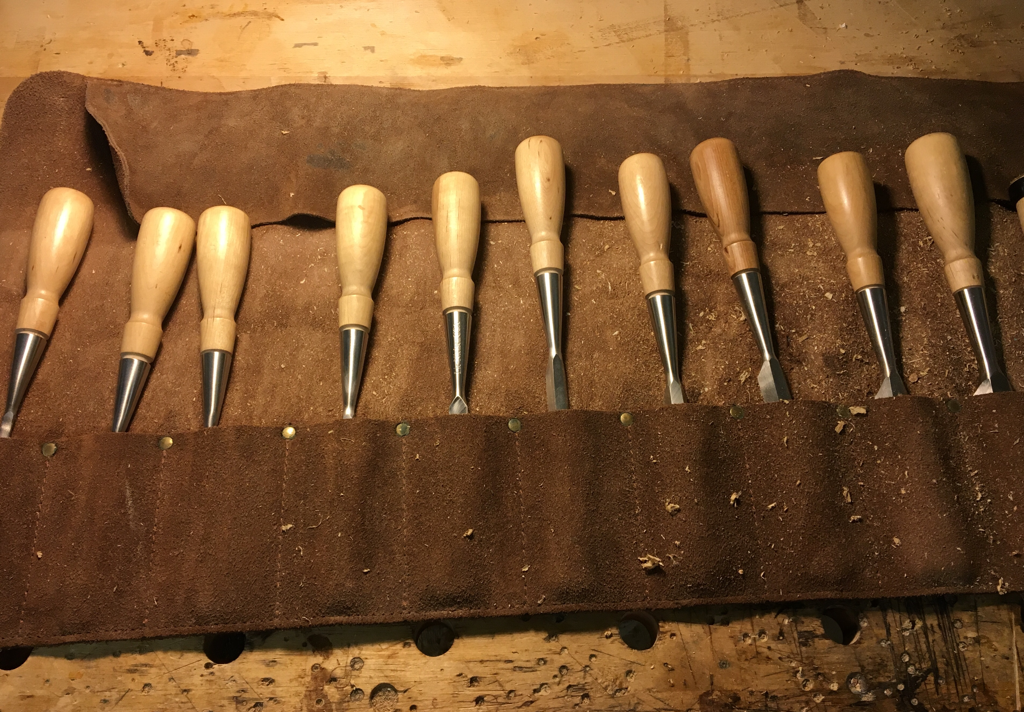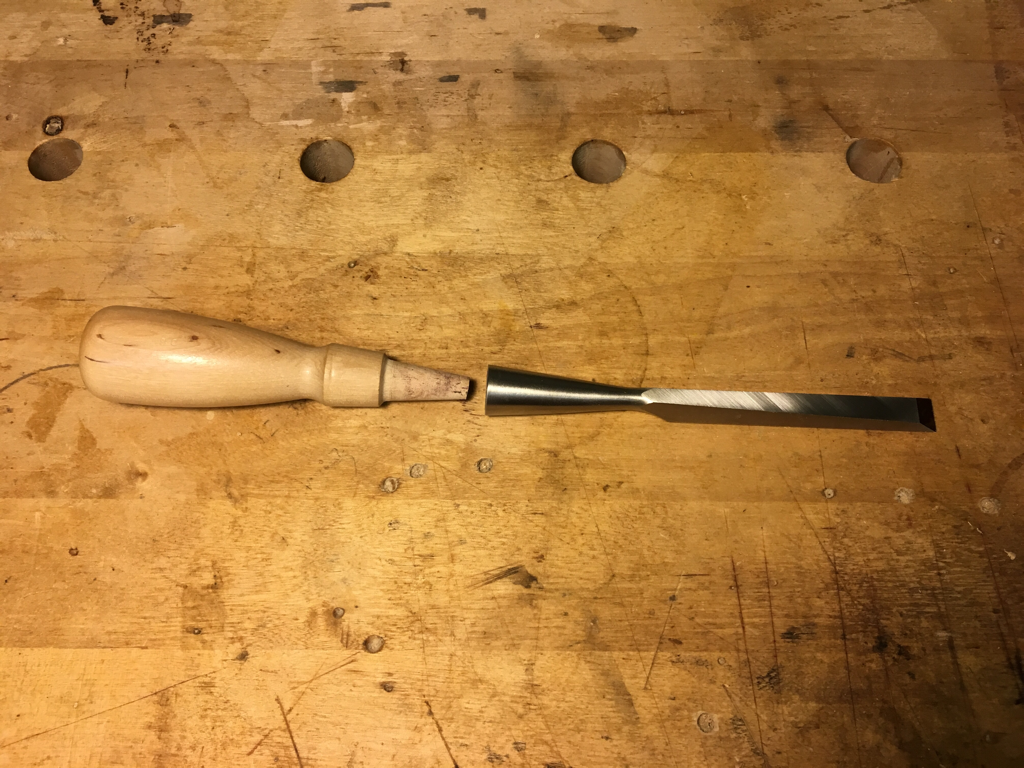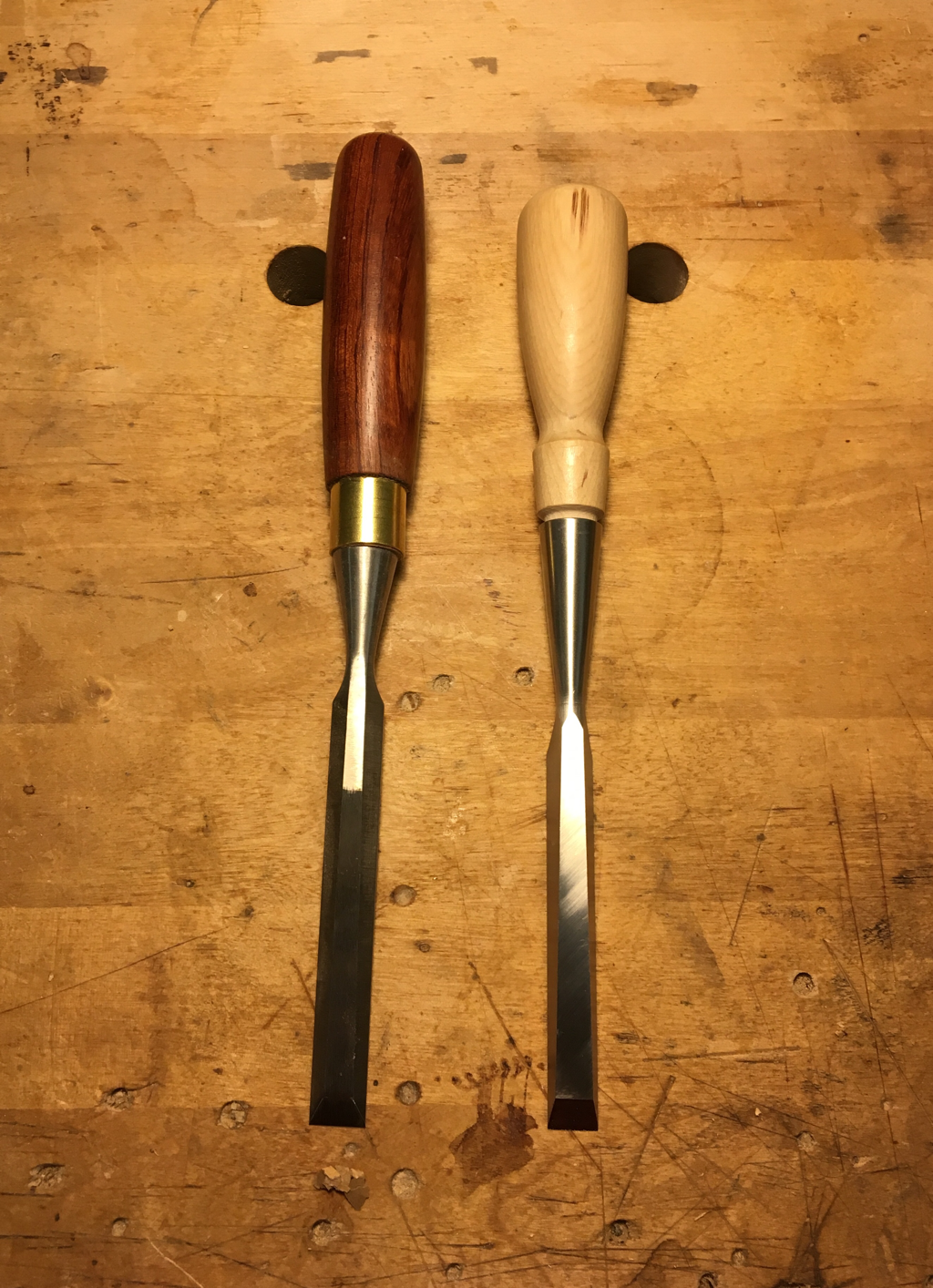|
Welcome to October's Tool of the Month blog post! This month I'll look at socket bevel edged chisels! The socket chisel is not a particularly common type of chisel these days due to the more complex design and therefore cost when compared to the more common tang chisels. The difference between tang and socket chisels is how the handle is attached to the blade. A tang chisel has a pointed metal tang formed on the opposite end of the blade, this is embedded into the handle, whereas a socket chisel handle has a cone shaped end that fits snugly inside the socket formed on the opposite end of the blade. The disadvantage of a tang chisel is that the pointed tang can act like a wedge and split the handle when repeatedly struck excessively with a mallet, this doesn’t happen with the socket chisels. Though occasionally the handles on socket chisels can come loose due to the wood shrinking as part of natural seasonal movement, however a sharp tap and they will be tight again! My socket chisels are made by American company Lie Nielsen Tool-Works and are based on an old Stanley design. The blades are made from A2 steel which takes and holds a good edge. The sides of the blades are very finely ground which make them brilliant for working on very fine joints.
That’s all for October, look out for November’s blog post in a few weeks time. Happy Halloween 🎃
1 Comment
Matthew Platt
10/11/2017 03:47:18 pm
Hi David,
Reply
Leave a Reply. |
About
Welcome to my blog! Here you can see what I have been up to in the workshop, gain an insight into my work and some of the many tools I use to make each piece of bespoke furniture. Archives
April 2024
Categories
All
|




 RSS Feed
RSS Feed